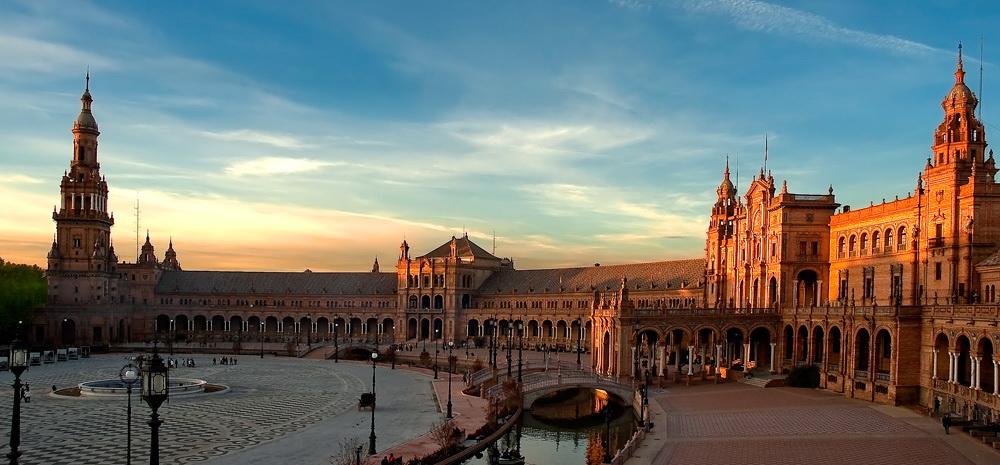
The Plaza de España in Sevilla is a plaza located in the Parque de María Luisa. It was built in 1928 for the Ibero-American Exposition of 1929 and almost bankrupted the city. It is a landmark example of the Renaissance Revival style in Spanish architecture.
1929, Seville hosted the Ibero-American Exposition World's Fair and the Plaza de España was the centre piece of the show. The entire southern end of the city was redeveloped at great cost into an expanse of gardens and grand boulevards and at the heart of the project lied the Parque de María Luisa, a park resembling a Moorish paradise with a half mile of: tiled fountains, pavilions, walls, ponds, benches, and exhedras; lush plantings of palms, orange trees, Mediterranean pines, and stylized flower beds of immense beauty. Numerous buildings were constructed within this heavenly complex for the exhibition. But a price was paid for this spectacular enclave. The estimated final cost of the exhibition works was 27 times more than the original budget, which was presented in 1914, totalling a massive 17,000,000pts. It may not sound like much but in today's money, it would come in at over 200,000,000 pounds sterling, a fortune for a city like Seville, which was going through financial difficulties at the time. It was the most expensive and the hardest construction of any fair to that date, employing on occasions more than 1,000 workers simultaneously. It seems that construction budgets have never been a Spanish forte, but in this case, we’ll let it go, as the result was a masterpiece for anyone’s eyes.
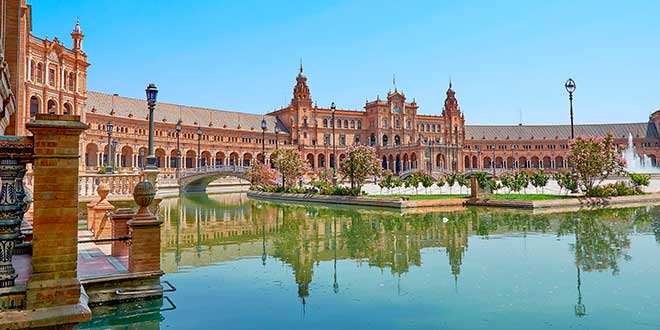
The initial idea of holding a World Fair in Seville was promoted in 1909 with the aim of opening the city and, especially, to modernise it. It would be the perfect occasion to achieve civil works, thus improve employment, promote the tourism, enhance the image of Seville and strengthen relationships with American countries. The fair was initially going to be inaugurated on April 1st, 1911. It was then delayed to 1914 but World War I (1914-18) and political issues between Morocco and Spain delayed it even further and it was finally held from May 9th, 1929 to June 21st, 1930.
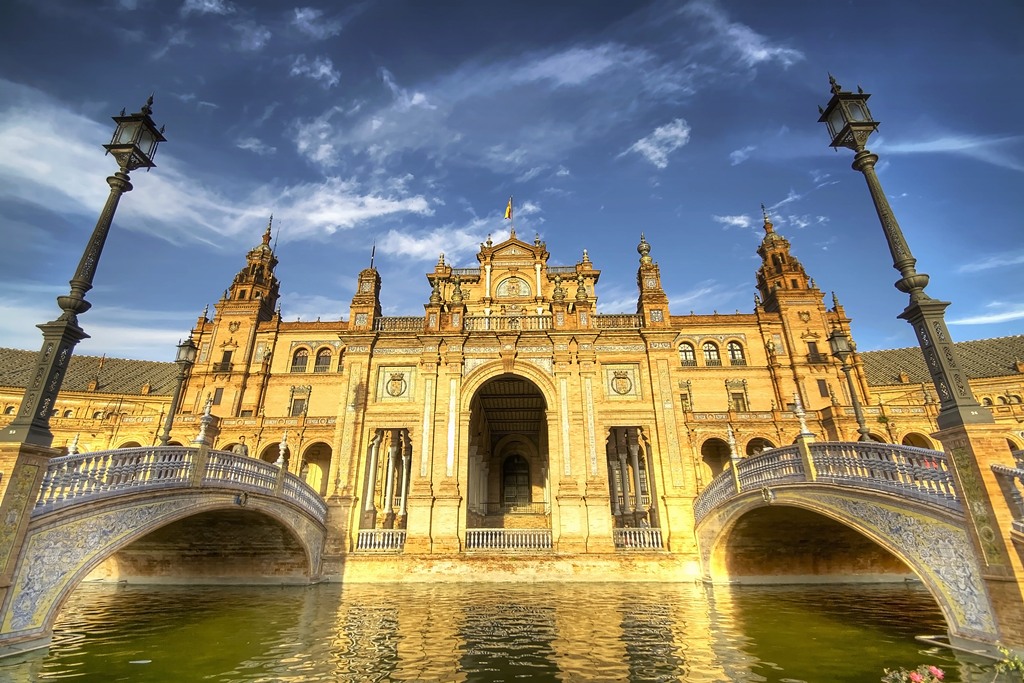
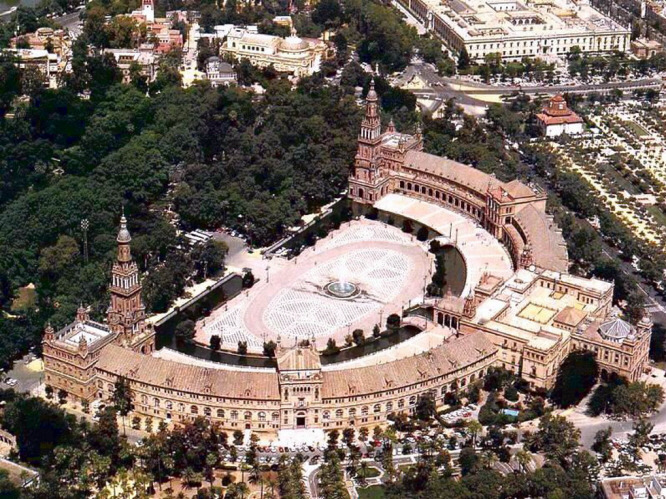
The Plaza de España, designed by Aníbal González, was the main pavilion building built on the edge of the park to showcase Spain's industry and technology exhibits. González combined a mix of 1920s Art Deco and 'mock Mudejar', and Neo-Mudéjar styles creating an atmosphere which was out of this world. The Plaza de España complex is a huge half-circle with buildings continually running around the edge accessible over the moat by a series of beautiful bridges representing the four ancient kingdoms of Spain. In the centre is the Vicente Traver fountain. By the walls of the Plaza are many tiled alcoves with benches, each representing a different province of Spain and served as meeting points.
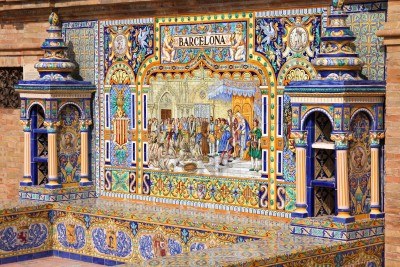

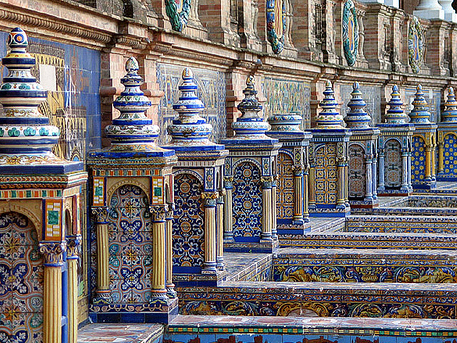
In 1926 Anibal Gonzalez resigned from his position and the Plaza de Espana was finished in 1928 by Vicente Taverner, who added the central fountain. It was also the place where King Alfonso XIII inaugurated the Fair.
Today the Plaza de España mainly consists of Government buildings. The Seville Town Hall, with a slight redesign, is located within it. The Plaza's tiled 'Alcoves of the Provinces' are backdrops for visitors portrait photographs, taken in their own home province's alcove. They are still a meeting point for tourists. Towards the end of the park, the grandest mansions from the fair have been adapted as museums. Ánibal Gonzalez was also the chief architect of the event and designed other buildings such as the Mudejar Pavilion (better known today as the Museo de Artes y Costumbres), the Fine Arts Pavilion (transformed later in the Archaeological Museum) and the Royal Pavilion. All of them can be found in the Maria Luisa Park, at the America Square (Plaza de America).
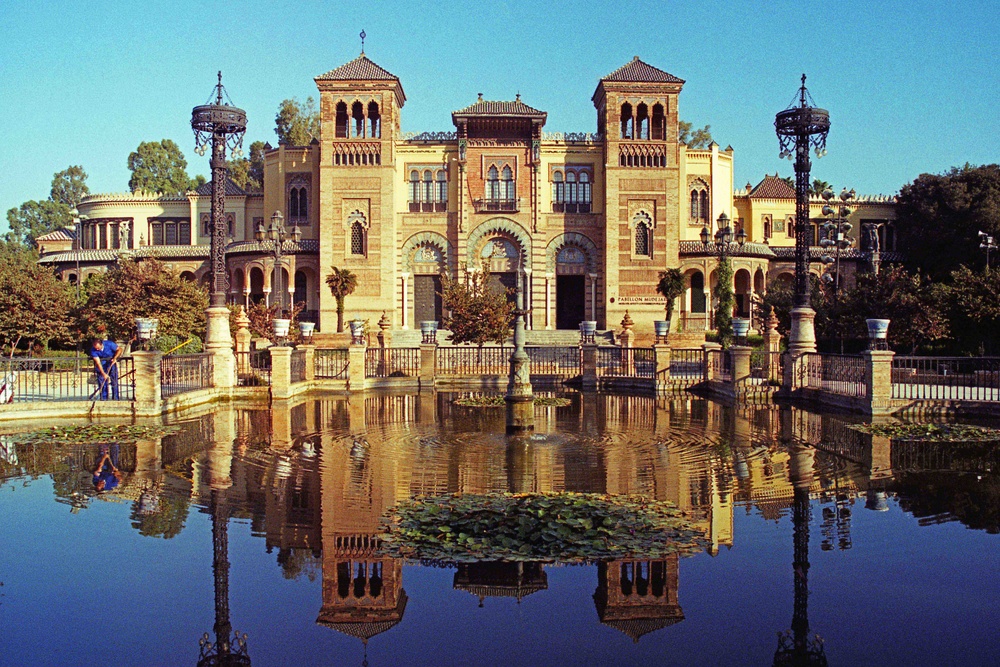
The farthest, the Archaeological Musem, exhibits Roman mosaics and artefacts from nearby Italica. Nowadays the complex still remains a magical place with a style that recreates de Arab constructions of 10 centuries ago and that emphasises the regions of Spain and its union with America.
The Plaza de España has been used as a filming location, including scenes for the 1962 film Lawrence of Arabia. The building was used as a location in the Star Wars movie series — Star Wars Episode I: The Phantom Menace (1999) and Star Wars Episode II: Attack of the Clones (2002) — in which it featured in exterior shots of the City of Theed on the Planet Naboo. It also featured in the 2012 film The Dictator.
Ver mapa más grande